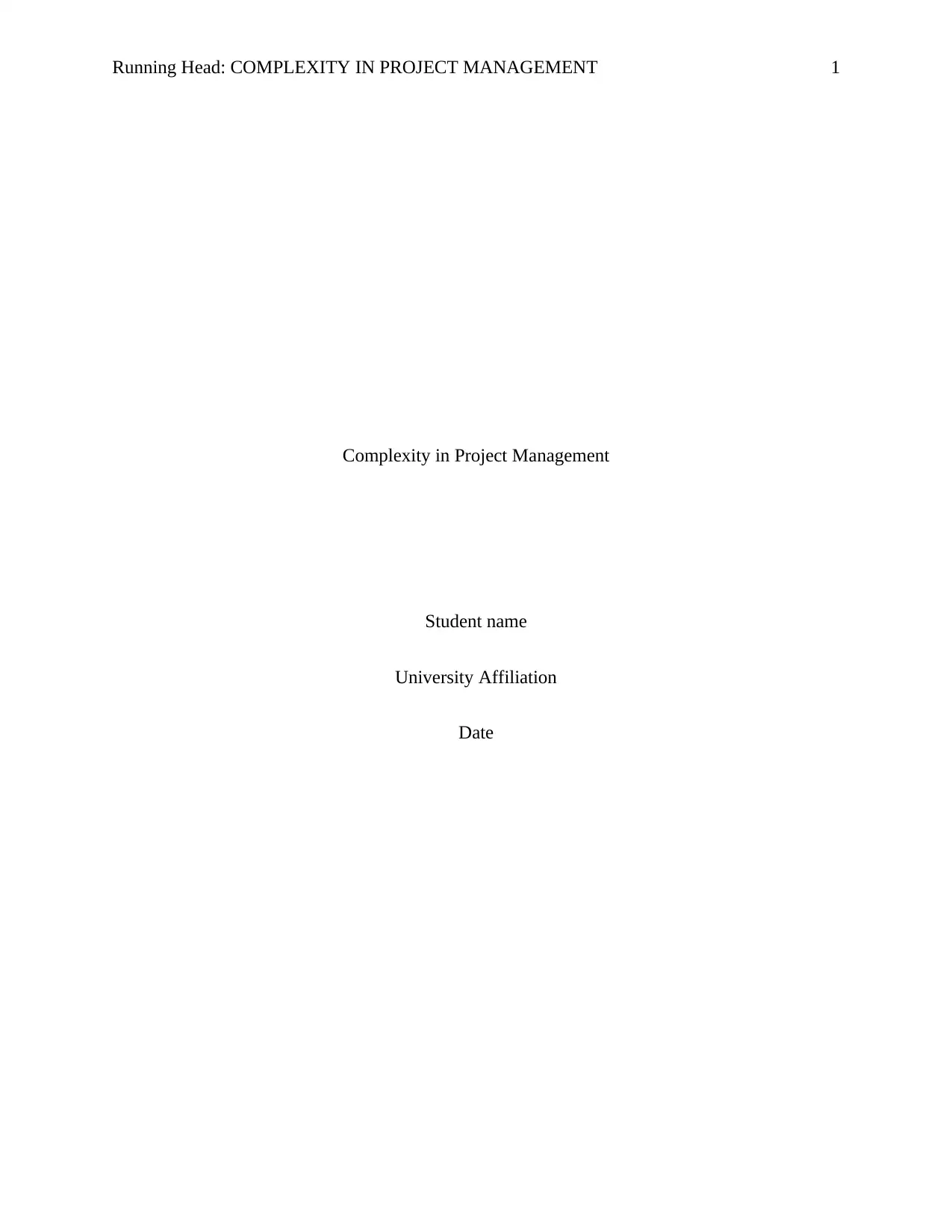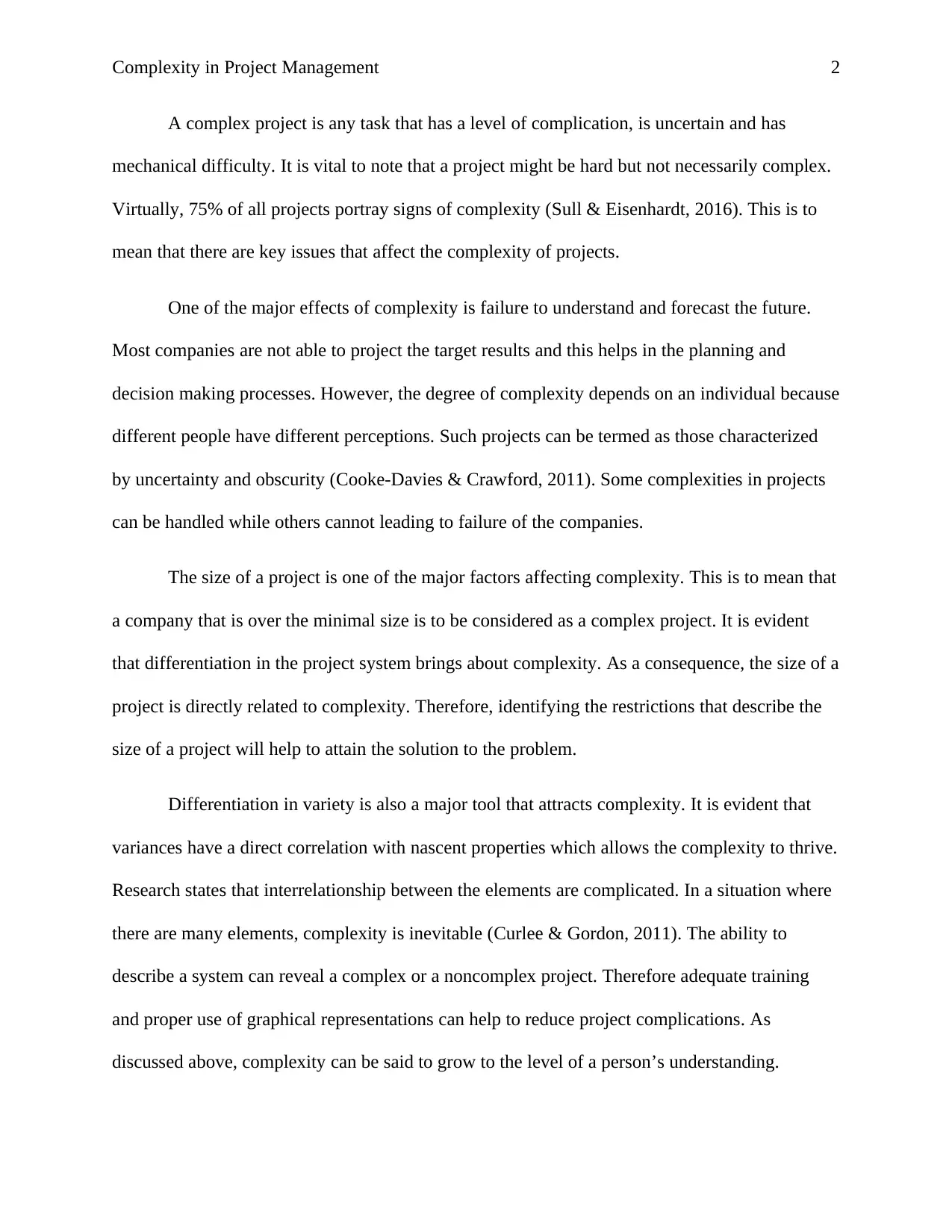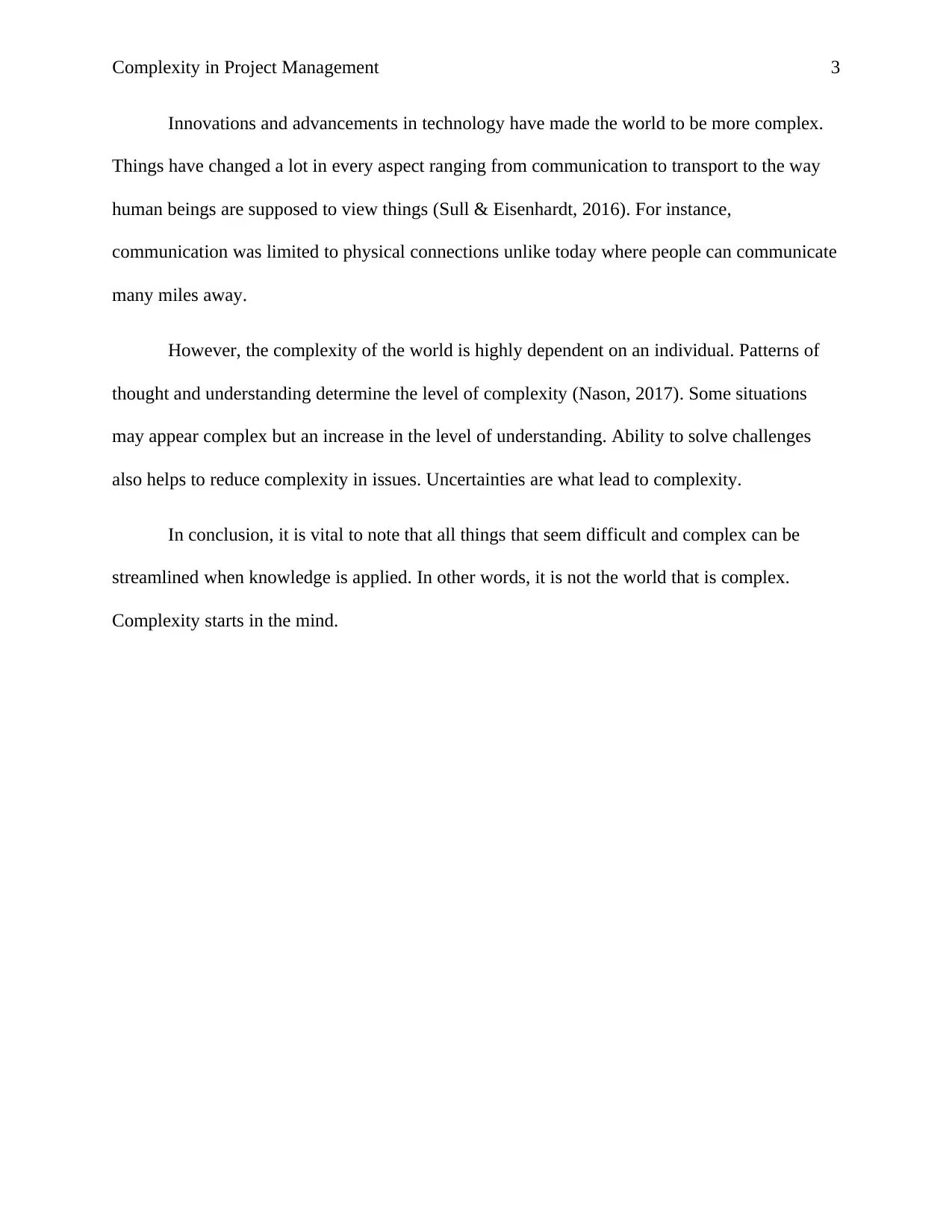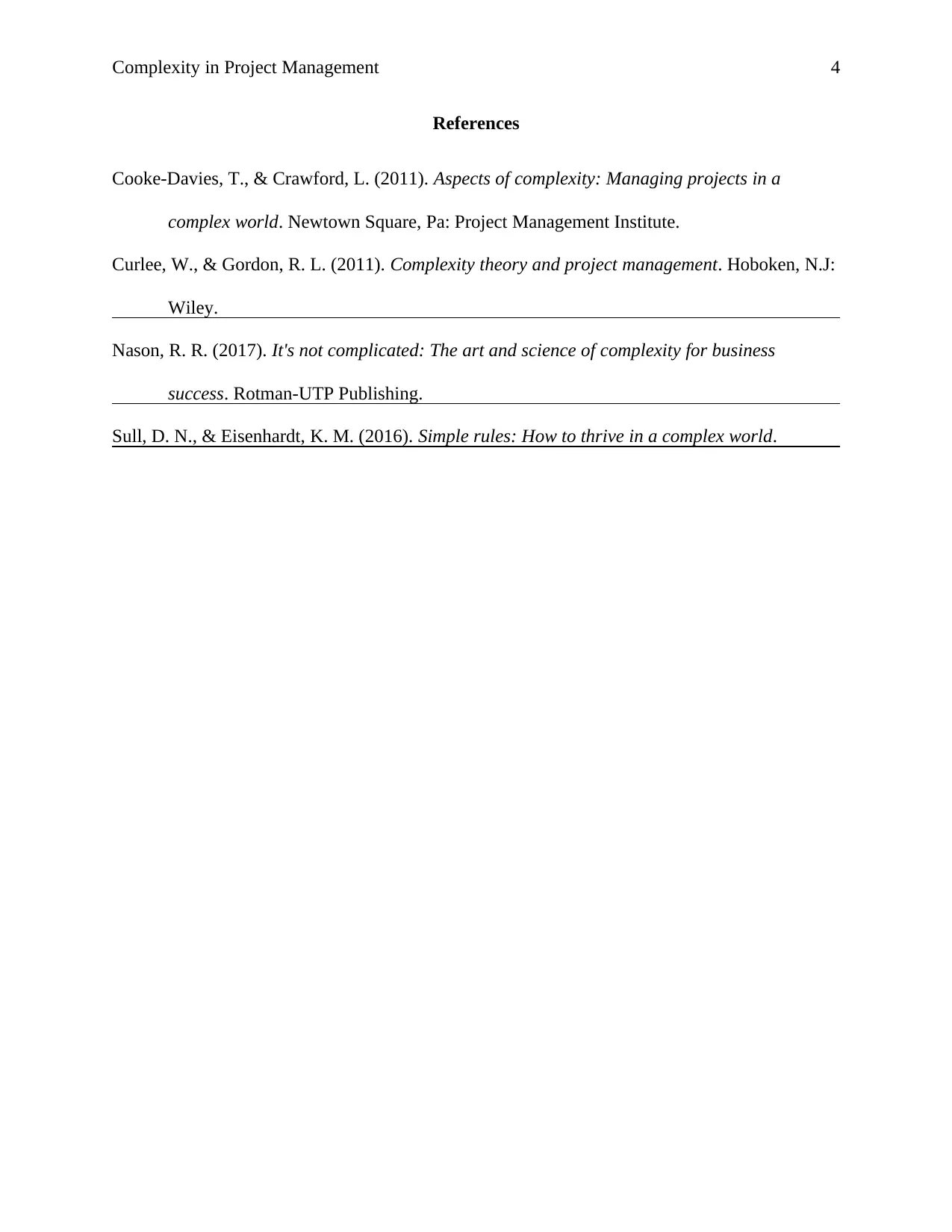Managing Complexity: Strategies for Successful Project Outcomes
VerifiedAdded on 2023/06/08
|4
|672
|130
Essay
AI Summary
This essay delves into the concept of complexity in project management, highlighting that a complex project involves complications, uncertainty, and mechanical difficulties. It emphasizes that the perception of complexity varies among individuals and that a project's size and differentiation significantly contribute to its complexity. The essay also discusses how advancements in technology have increased complexity, but understanding and problem-solving skills can mitigate these challenges. Ultimately, the essay concludes that complexity often originates in the mind and can be managed through knowledge and effective strategies. The document / assignment is contributed by a student to be published on the website Desklib. Desklib is a platform which provides all the necessary AI based study tools for students.
1 out of 4








![[object Object]](/_next/static/media/star-bottom.7253800d.svg)